Spray it loud
The streets of Ann Arbor are mostly deserted of late, but East Liberty’s Graffiti Alley is bursting with life. This ever-changing canvas offers a real-time record of our collective experience – in vibrant, vivid color. Black Lives Matter is summer 2020’s dominant theme. (Images: Deborah Holdship; captions sourced by Angelina Brede.)
-
Love is all you need
This eternal message is a good place to begin our tour of Graffiti Alley. The sentiment transcends the politics of the day, from Vietnam protests to BLM events. In fact, it’s not unusual to see local bridal parties posing in the colorful space.
-
Black Lives Matter
Ann Arbor held its first BLM protests at least as early as November 2014, following the decision to not indict the officer who killed Michael Brown in Ferguson, Mo., and simultaneously protesting the police homicide of Aura Rosser in Ann Arbor that same month. A series of protests and teach-ins followed in the campaign for justice for Aura Rosser and for BLM. Many occurred on the U-M campus and with active organizing by U-M students, faculty, and staff.
-
The Wall
George Floyd. Breonna Taylor. Tamir Rice. Sandra Bland. Eric Garner. In June 2020, BLM activists chose to let these and other names speak for themselves in a black-and-white mural that stretches 30 feet long by nearly 14 feet tall.
-
Spray it proud
Graffiti Alley has been known as Bubblegum Alley and Poet’s Alley, and runs from East Liberty to Washington Street. Since the 1980s, it has offered street artists a not-so-blank-slate.
-
Do-over … and over … and over ….
What we now know as Graffiti Alley originally started as a space for a city-approved mural by commissioned artist Katherine Tombeau Cost in 1999. The five-month project, titled “Infinite Possibilities” slowly became covered by the colorful (and sometimes vulgar) images and messages for which the alley is known today.
-
The eye of the beholder
Despite local ordinances designed to crack down on graffiti, Ann Arbor street artists get a pass to ply their talents in the Alley.
-
Do you feel safe?
Recent poll data suggests that between 15 million and 26 million people in the United States have participated in protests against police brutality in the wake of George Floyd’s death in May 2020. This prescient message predated the use of unmarked federal troops in Portland, Ore., this July.
-
Enough said
This chant is familiar to activists; it gained traction among citizens fighting for racial justice in 1986 following the murder of Michael Griffith by white youths in New York City.
-
Political action
Long before Black Lives Matter, U-M students formed the Black Action Movement (BAM) in 1969-70. They organized a 12-day campus shutdown that received national attention and media coverage. BAM’s top priority was to increase Black student enrollment to 10 percent of the total population by the 1973-74 academic year. That goal has yet to be reached.
-
We’re going to need more paint
The University established the Center for Afroamerican and African Studies in 1970. In the late ’70s, BAM II continued the efforts to increase enrollment of Black students, and by 1987 BAM III and United Coalition Against Racism (UCAR) led protests that resulted in, among other milestones, the official recognition of the Rev. Martin Luther King Jr. Day on campus.
-
Domino effect
In 2013, Black students at U-M launched the Being Black at Michigan campaign (#BBUM). Inspired by the Black Action Movement(s), the students caught the national media’s attention and the movement was picked up by other universities.
-
In his footsteps
In 1853, Samuel Codes Watson was the first African American student admitted to U-M. Born in South Carolina in 1832, Watson was mixed race and passed for white while attending Michigan. He received his M.D. from Cleveland Medical College in 1857, as one of the first African Americans to do so.
-
Words to live by
In October 2016, U-M unveiled a strategic plan to support its Diversity, Equity & Inclusion initiative. The plan budgeted for an $85-million investment in new resources designed to help transform the campus culture, including all 19 U-M schools and colleges, administrative units, student life, athletics, and the health system.
-
The messenger
It’s not just humans advocating for Black lives. Even Jake the Dog from the animated series ‘Adventure Time’ has joined the BLM movement.
-
Timeless
Here’s an oldie-but-goodie. This spray-painted sentiment never goes out of style, especially when you’re a broke college student.
-
Be the change
This straightforward message reminds us that change doesn’t happen on its own, no matter how many Graffiti Alleys exist in the universe.

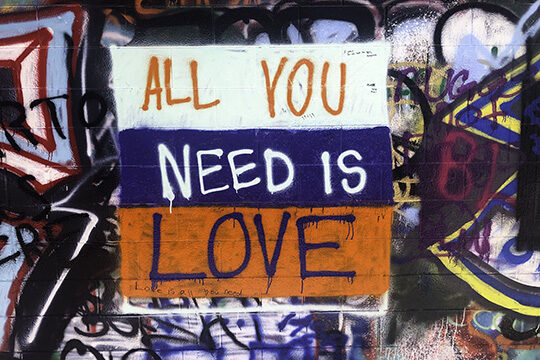
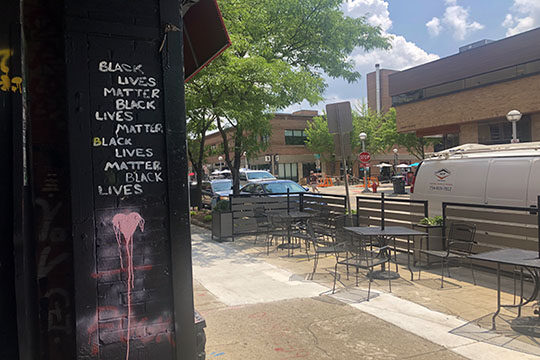
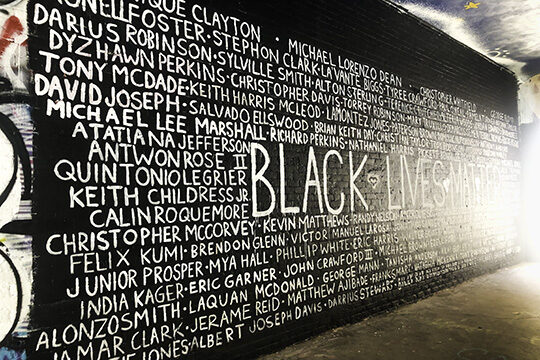
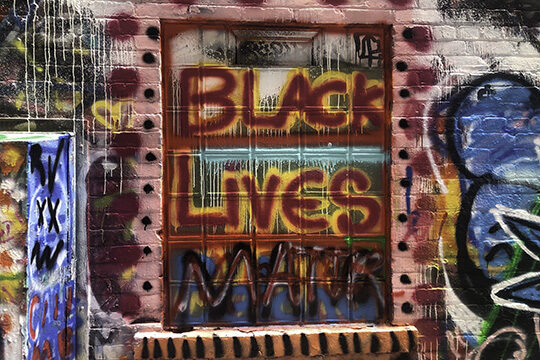
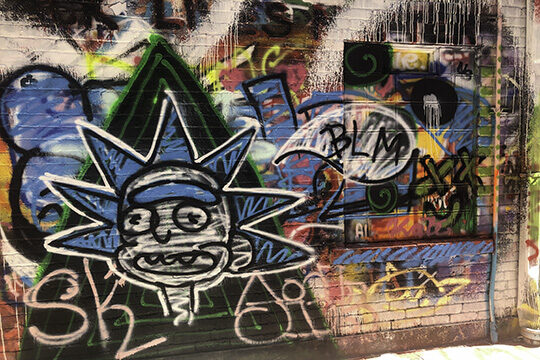
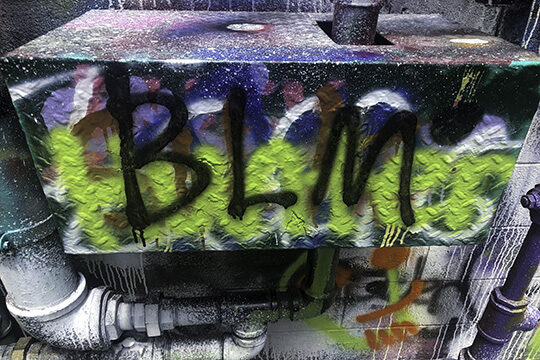

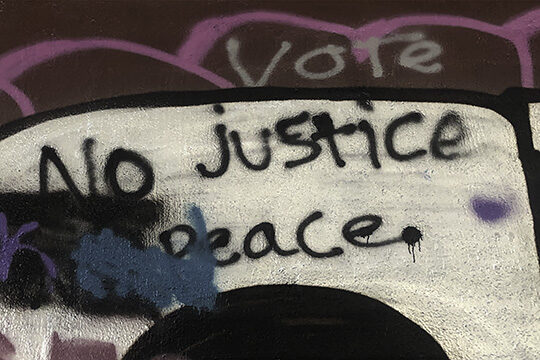


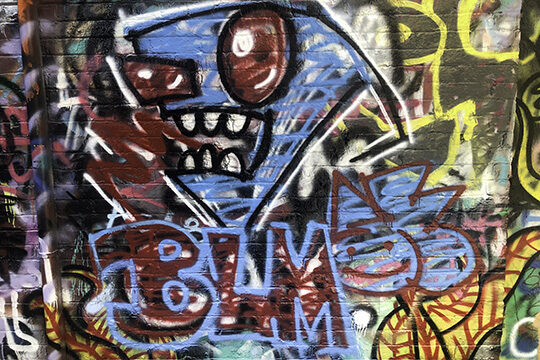

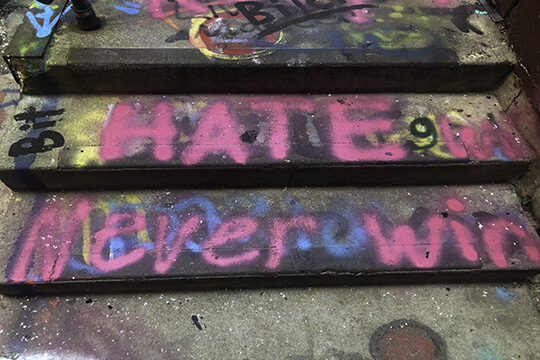


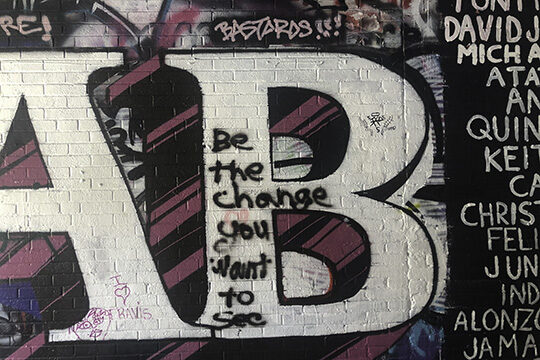

Booth Muller - 1969
Graffiti is often intriguing and often says something about the neighborhood in which it’s found. When I transferred to Michigan from another school, the beginning of my junior year, I thought that one particular item of graffiti, spray-painted on some plywood surrounding a campus construction site, was an indicator that the intellectual level of the student body might be a bit higher than my previous college, where a typical witticism might be “Flush twice; it’s a long way to the cafeteria!” Michigan’s plywood wall, on the other hand, seemed far more intellectually thought-provoking to a 20-year-old in the era of the Viet Nam war and political assassinations: “GRAVITY is the physical manifestation of the metaphysical truth that THE WHOLE WORLD SUCKS!”
Reply
Jacquelyn Miller - 1994
Thank you for featuring BLM graffiti art. There is a glaring error in the caption to the second photo: “Ann Arbor held its first BLM protest on July 9, 2016, following the fatal shootings of two Black men — Alton Sterling in Baton Rouge, La., and Philando Castile in St. Paul, Minn. — by police officers.”
Ann Arbor held its first BLM protests at least as early as November 2014, following the decision to not indict the officer who killed Michael Brown in Ferguson, MO, and simultaneously protesting the police homicide of Aura Rosser in Ann Arbor that same month. A series of protests and teach-ins followed in the campaign for justice for Aura Rosser and for BLM. Many occurred on UM campus and with active organizing by UM students, faculty, and staff. Please make a correction and do not erase our local history.
Reply